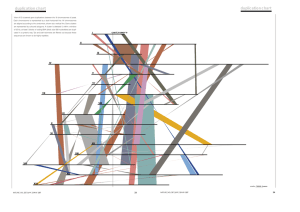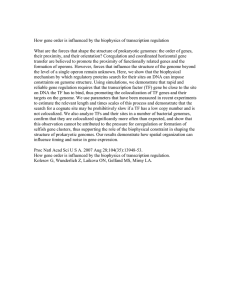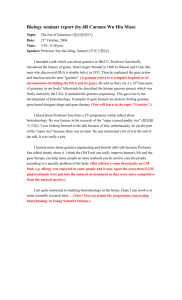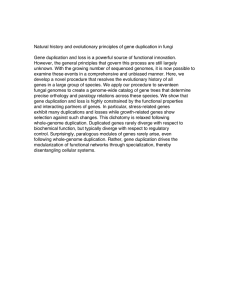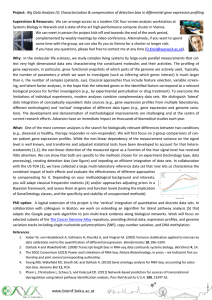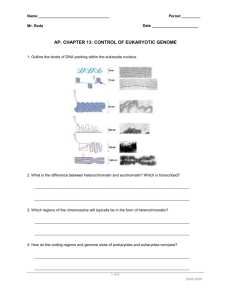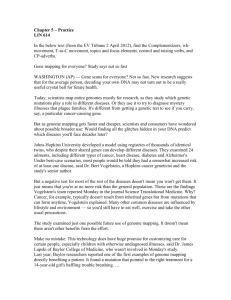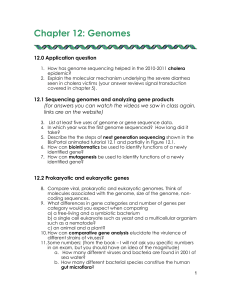BI475 Ch15 SQ
advertisement
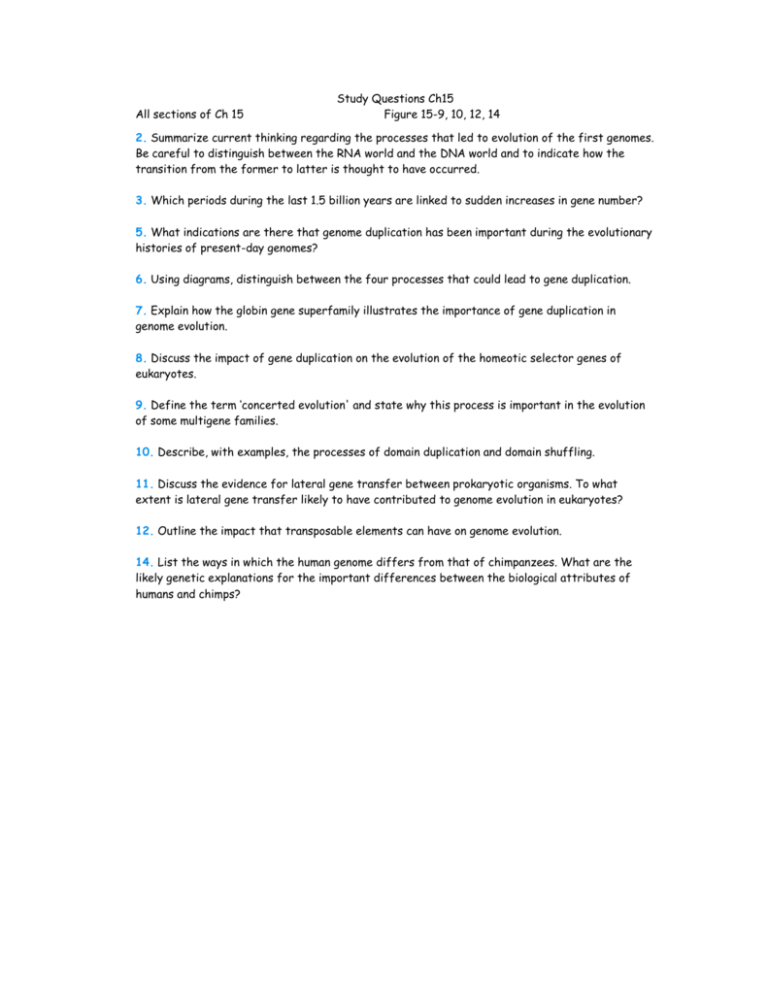
All sections of Ch 15 Study Questions Ch15 Figure 15-9, 10, 12, 14 2. Summarize current thinking regarding the processes that led to evolution of the first genomes. Be careful to distinguish between the RNA world and the DNA world and to indicate how the transition from the former to latter is thought to have occurred. 3. Which periods during the last 1.5 billion years are linked to sudden increases in gene number? 5. What indications are there that genome duplication has been important during the evolutionary histories of present-day genomes? 6. Using diagrams, distinguish between the four processes that could lead to gene duplication. 7. Explain how the globin gene superfamily illustrates the importance of gene duplication in genome evolution. 8. Discuss the impact of gene duplication on the evolution of the homeotic selector genes of eukaryotes. 9. Define the term ‘concerted evolution' and state why this process is important in the evolution of some multigene families. 10. Describe, with examples, the processes of domain duplication and domain shuffling. 11. Discuss the evidence for lateral gene transfer between prokaryotic organisms. To what extent is lateral gene transfer likely to have contributed to genome evolution in eukaryotes? 12. Outline the impact that transposable elements can have on genome evolution. 14. List the ways in which the human genome differs from that of chimpanzees. What are the likely genetic explanations for the important differences between the biological attributes of humans and chimps?




